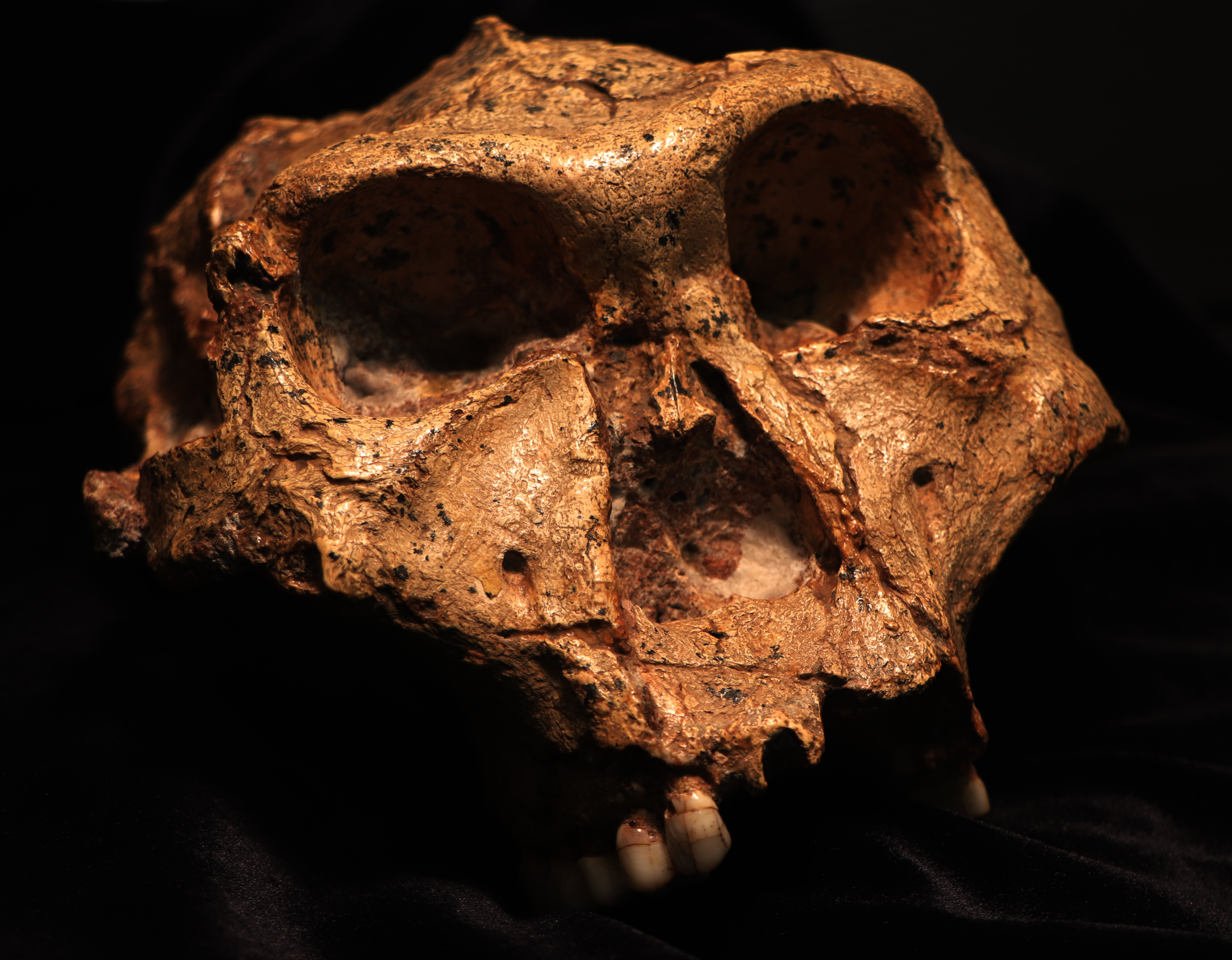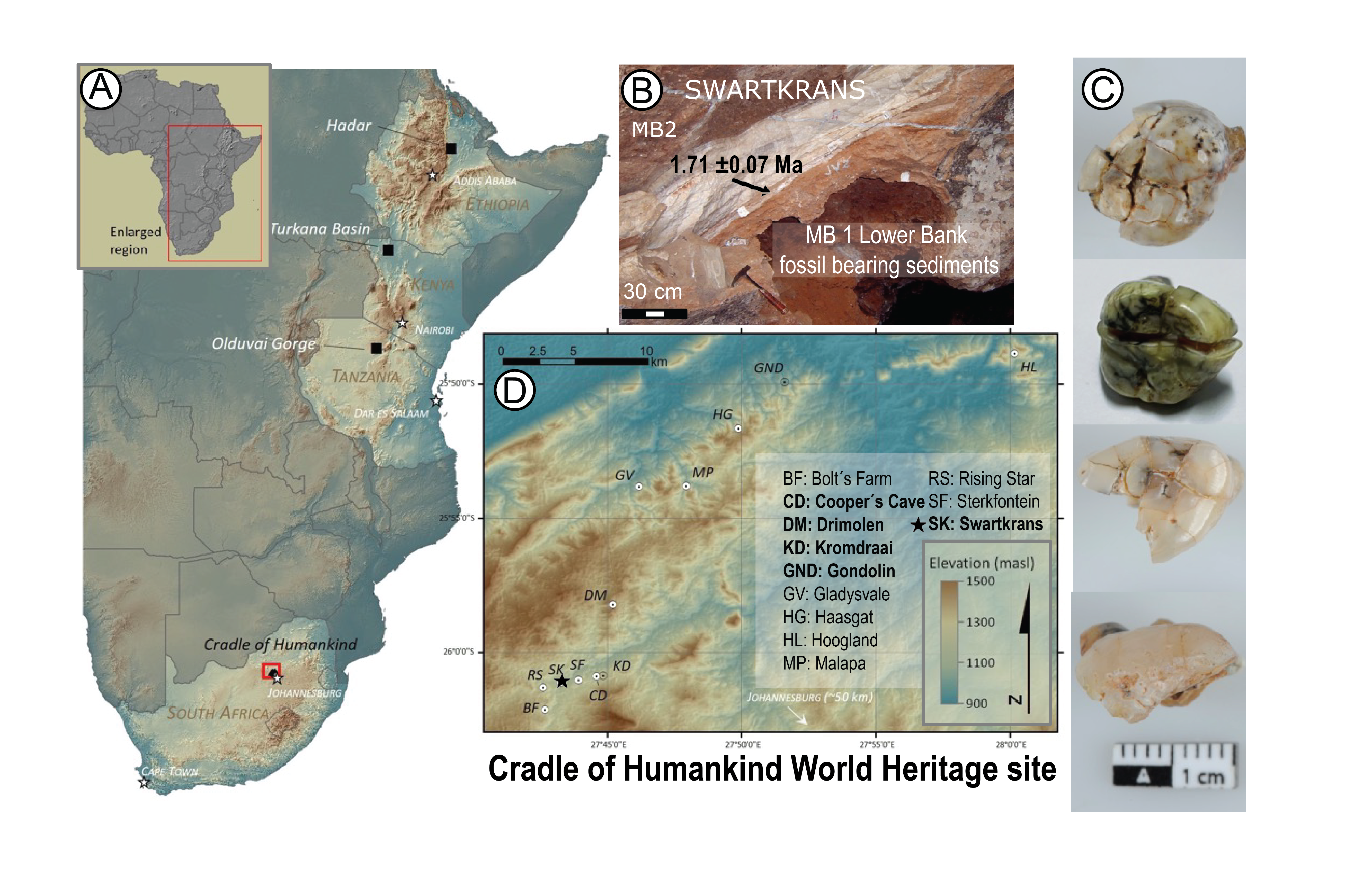Ancient proteins unlock biological sex and genetic variation in 2-million-year-old Paranthropus robustus from South Africa
Ancient proteins unlock biological sex and genetic variation in 2-million-year-old Paranthropus robustus from South Africa
Ancient proteins unlock biological sex and genetic variation in 2-million-year-old Paranthropus robustus from South Africa

Published in the prestigious journal Science, the research has achieved a milestone in the study of human evolution following the recovery of ancient protein sequences from four teeth approximately 2 million years old from Swartkrans, South Africa. The fossil remains have been attributed to the extinct hominid species Paranthropus robustus. Considered a side branch of our evolutionary tree, Paranthropus emerged and evolved in Africa between 2.8 and 1.2 million years ago, coexisting with and possibly interacting with early Homo species. Paranthropus was bipedal, but also displayed forelimb adaptations for climbing and a broad dietary niche, based on various types of plants and possibly insects.
Led by the University of Copenhagen and the University of Cape Town, with the participation of the Institute of Evolutionary Biology (IBE), a joint center of the Spanish National Research Council (CSIC) and Pompeu Fabra University (UPF), the team extracted protein fragments from the tooth enamel of these ancient human relatives and used state-of-the-art mass spectrometry techniques to partially reconstruct their sequences.
Ancient Proteins Recovered from Africa in Deep Time
The pioneering approach employed by the team allowed for the determination of biological sex for individual hominins and, crucially, revealed previously undetected genetic variability within P. robustus. These findings not only challenge long-held assumptions based solely on skeletal morphology, but also open new avenues for understanding the complex evolutionary history of our ancient relatives. The successful application of paleoproteomics to determine sex and genetic variability in southern African Paranthropus represents a possible shift in paleoanthropology, moving beyond the inherent limitations of morphological analysis and the preservation challenges of ancient DNA (aDNA), whose recovery in Africa does not go beyond ~20,000 years before present.
The four Paranthropus specimens were recovered from consolidated cave sediments, which might have contributed to the preservation of the proteins within the fossil teeth. However, time also does significantly affect protein recovery from fossil samples, making peptides shorter and shorter, thus escaping detectability by mass spectrometry.
“Due to the poor preservation, we used peptide fractionation, a method widely employed in modern proteomics, and state-of-the-art mass spectrometers, to maximize protein coverage from these rare samples, increasing our chances of finding key phylogenetic information.” - explains Jesper Olsen, senior author on the paper, and Executive Director of the Center for Protein Research, University of Copenhagen.
This breakthrough means that a wide range of African hominin fossils, previously considered beyond the reach of genetic analysis, could provide crucial biomolecular data, with the potential to transform our understanding of the diversity and variation among African hominins millions of years ago.

Location and cave structure of the site of Swartkrans, South Africa and the occlusal view of Paranthropus teeth analyzed, from top to bottom: SK 830, a left P4; SK 835, a left M3; SK 850, a right P3; SK 14132. Credit: Dr. Robyn Pickering.
Evolutionary Perspectives
The analysis of ancient proteins revealed several key findings. By analyzing tooth enamel, the team was able to identify the biological sex of the specimens by detecting specific variants of a protein called amelogenin. The detection of a male-specific variant allowed them to confidently identify two Paranthropus specimens as males, while a novel quantitative approach allowed them to infer that the other two specimens were females. The ability to accurately determine the biological sex of fossilized remains is a crucial advance, allowing for a more precise understanding of sex-based differences in the land use, distribution, and social behaviors of our long-extinct relatives.
“Having determined the biological sex of these individuals who lived two million years ago is truly remarkable. This fact opens the door to understanding the biology of other populations belonging to the human lineage,” comments Esther Lizano, Junior Distinguished Research Fellow at the Institut Català de Paleontologia Miquel Crusafont (ICP) who participated in the study.
The team also discovered that the mutation found in the polishin protein, initially identified as a genetic variant unique to the species, exhibited variations among the four Paranthropus individuals analyzed.
The team also performed morphological analyses of the teeth, which identified a possible substructure within Paranthropus. The results suggest that the considerable morphological variation observed in Paranthropus could reflect more complex population dynamics, microevolution, or even the presence of distinct groups or taxa.
Most of the recovered Paranthropus protein sequences were identical to those of modern humans, with only two positions differing between the two groups. As a result, these specimens appear to be more closely related to the Homo lineage (including ourselves and our genetic cousins, the Neanderthals and Denisovans) than to any other extant species, although they remain slightly distinct. However, the age of the samples affects the total protein recovery, reducing the likelihood of identifying crucial phylogenetic information that allows for accurate comparisons between closely related groups.
“The study shows both the possibilities and limitations of our current technology. It demonstrates the complementary power of morphological analysis for the study of human evolution, but it is also necessary to understand that molecular diversity is limited and not always informative,” concludes Tomàs Marquès, principal investigator at the Institute of Evolutionary Biology (IBE) and ICREA research professor at Pompeu Fabra University (UPF), who participated in the study.
Main Funding:
- European Union’s Marie Skłodowska-Curie training network “PUSHH” under the Horizon 2020 research and innovation program, grant no. 861389 (E.C.);
- European Research Council (ERC) Advanced Grant “BACKWARD,” agreement no. 101021361, under the EU’s Horizon 2020 program (E.C.);
- ERC Proof of Concept Grant “SSPIN,” agreement no. 101138962, under the EU’s Horizon Europe program (E.C.).
Referenced article:
Madupe, P. P., Koenig, C., Patramanis, I., Rüther, P. L., Hlazo, N., Mackie, M., et al. (2025). Enamel proteins reveal biological sex and genetic variability in southern African Paranthropus. Science. https://doi.org/10.1126/science.adt9539
